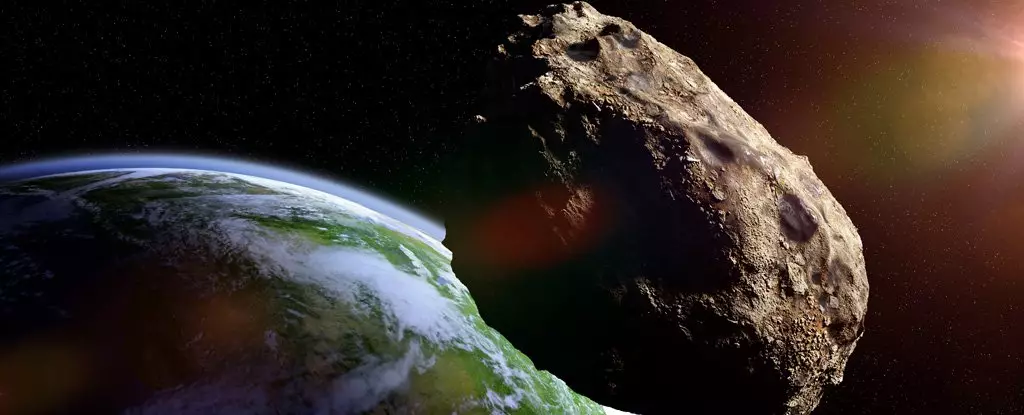In a world where space exploration and terrestrial realities intertwine, the awareness of near-Earth asteroids has intensified significantly, underscored by the recent scrutiny of asteroid 2024 YR4. This celestial body has captured the attention of global space agencies due to its potential threat to Earth; currently standing at a probability of 1 in 83 for a possible collision within the next eight years. The International Asteroid Warning Network (IAWN) has identified this rock, labeled 2024 YR4, as a significant point of concern, designating an official observation date of December 22, 2032, for its potential impact.
Asteroids, while part of our solar system’s fabric, pose profound challenges. As underscored by Catalina Sky Survey engineer David Rankin, the mere suggestion of an asteroid with such high impact probabilities compels nations to reevaluate their planetary defense protocols.
The journey of asteroid 2024 YR4 is monitored closely, with a focus on tracking its trajectory and size. Discovered on December 27, 2024, by a telescope operating within the Asteroid Terrestrial-impact Last Alert System (ATLAS) in Río Hurtado, Chile, this space rock measures an estimated 40 to 100 meters in width. However, its exact size remains uncertain, highlighting the inherent challenges in monitoring near-Earth objects (NEOs). The ongoing observations serve as vital tools for refining predictions and understanding the potential risks associated with this asteroid.
Efforts from various international organizations, including the European Space Agency (ESA) and NASA’s Center for Near-Earth Object Studies, illustrate the global alliance in addressing potential space threats. Their collective response encompasses a broader strategy that extends beyond mere observation. Initial steps involve intensive observational campaigns to gather more data. As astronomer Colin Snodgrass highlights, should early data indicate that an impact scenario remains viable, the ensuing steps would involve increasingly detailed characterizations and strategies for potential interventions.
While the asteroid’s diameter may not be large enough to create global devastation, it is sufficient to inflict serious damage on localized areas upon impact. Such an event could have ramifications reaching up to 50 kilometers from the strike zone. The uncertain nature of its course has prompted discussions surrounding potential impact sites, including regions in the eastern Pacific, northern South America, Africa, and South Asia.
While current estimates suggest a likelihood of just over 1 percent for an impact, the asteroid has been classified with a rating of 3 on the Torino Scale. This classification signifies it as a potential concern warranting attention, though further observations may lead to a re-evaluation of its risk status. Historically, asteroids like 99942 Apophis have undergone similar scrutiny, only to have their threat levels reduced with more data, underscoring the importance of diligent monitoring.
The Evolving Nature of Risk Assessment
Asteroids present a unique quandary in the evaluation of collision risks. The initial stages following their discovery often present widened probability corridors due to limited observational data. Consequently, as more expansive findings emerge, the trajectory of the asteroid tends to become clearer, allowing for refined risk assessments. This phenomenon often leads to a perception of heightened risk in early observational stages, as uncertainty gives way to more stable trajectories over time.
Asteroid 2024 YR4, however, comes with its own set of complexities due to its elongated orbit around the Sun, making its trajectory more challenging to project accurately. The ongoing evolution of this asteroid’s path marks a pivotal focus for the Space Mission Planning Advisory Group, which convenes to discuss strategies for future engagement should the risk remain significant.
Agency Responses and Future Strategies
In light of the disclosed risks posed by asteroid 2024 YR4, proactive measures within the scientific community have gained momentum. The Space Mission Planning Advisory Group will be consulting with the United Nations to outline potential strategies to either deflect or neutralize the asteroid, drawing from insights gathered in successful missions like NASA’s Dart mission.
As Colin Snodgrass emphasizes, our technological capabilities are already proven effective against asteroids of this magnitude. The ongoing dialogue surrounding asteroid 2024 YR4 combines academic insight, global collaboration, and cutting-edge technology to ensure that if a direct threat emerges, we are equipped to respond effectively.
As asteroid 2024 YR4 looms in proximity, the concerted efforts of international space agencies exemplify the urgency and seriousness with which humanity approaches cosmic risk. Every observation contributes to the quest for knowledge, as the cosmos continually influences the fate of our planet.


Leave a Reply